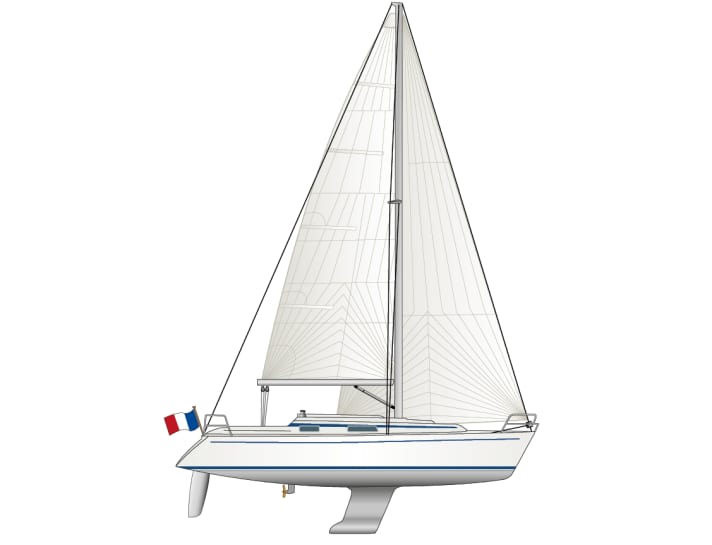





Maybe it's because the Dufour 30 was the smallest candidate in the test and therefore enjoyed something like puppy protection - but all the testers liked it straight away. Or maybe it's because she doesn't raise any questions; you step on board and feel immediately at home. The ship is clearly structured and cleanly finished. You won't find any strange solutions. Everything looks very simple but complete, almost too clean. The woodwork is neatly executed, but the storage compartments in the saloon have no flaps or doors. Stowage space can be found under the saloon benches and aft in the locker and in the galley.
The Dufour 30 is part of a used boat comparison test:
You can easily find the perfect yacht for 40,000. But: buy cheap and invest or spend it all and go straight away? We tested five yachts to find out:
You get the feeling that Dufour wanted to build a real yacht at nine metres in length, it cost what it wanted. So centimetres were haggled over everywhere. The saloon floor was lowered a few centimetres behind the keel structure so that at least 1.78 metres of interior height is possible there; elsewhere it is less. The inner aft berth is too short, with the head practically lying on the saildrive. This is a shame, because the engine could have been moved forward by a good 15 centimetres, which would have created two usable berths. You can't be too tall for the Dufour. However, its easy accessibility makes it a perfect beginner's boat, even under sail.
However, it is by no means perfect
The Dufour shoots into the sun several times without much notice. The tiller deflection is very limited, probably to avoid injuries when travelling astern due to excessive pressure on the rudder. This means that the urge to windward cannot be adequately parried. A pull on the backstay could help. But no way: The rear wire cannot be trimmed. Traveller to leeward? Good idea, but there is none. More twist with a kicker? Also good, but there isn't one either. In short: apart from the sheet and halyard, there is nothing left to trim. So a reef is needed. At least that's easy to do.
Berth dimensions

Not everyone masters the black magic of trim, especially not those who are just starting out in sailing. So the makers thought that a designated novice boat doesn't need to have these ingredients. The result: simplicity everywhere. That's fine as long as you reef early enough. The cockpit is large, but you always have the feeling of being on a boat rather than in one. The coaming is low, as is the cockpit tub. One is due to the space in the aft chamber, the other to the attractive lines.
However, the Dufour does not feel unsafe at all. The easy handling in particular ensures spontaneous sailing pleasure. In fact, it is a great beginner's and family boat.
Even under engine power, you have to get used to the small rudder deflection: Just through the wind in the narrow pit lane? Not an option. Never mind, you'll learn quickly. The Dufour is then a handy boat whose simplicity also keeps the follow-up costs manageable. Consistently successful!
The Dufour 30 in detail


Technical data
- Designer: J&J-Design
- Quantity: 479
- Hull length: 9.00 m
- Width: 3.00 m
- Draught: 1.48 m
- Weight: 3.0 tonnes
- Ballast/proportion: 0.95 t/32 %
- Sail area: 40.5 m²
- Sail carrying capacity: 4.4
- Engine (Volvo): 13 kW/18 hp
Hull and deck construction
Hull solid laminate in hand lay-up process, deck with balsa core. Floor assembly GRP, cast iron keel
Model history
The Dufour 30 was not modified during its construction period. The engines are all twin-circuit cooled. There was also a version with a shallow keel and a draught of 1.20 metres
Market situation
- The offer is small, the ships are gone quickly
- Prices from 30,000 to 40,000 euros*
* Status 2024
YACHT rating
A handy boat, well made and largely convincing. A little tight below deck. Ideal for beginners
Design and concept
- + Handy boat
- + Large cockpit
- - Too little rudder deflection
Living and finishing quality
- + Clean, solid workmanship
- - Bunk dimensions and headroom short
- - Narrow access to the forward berth

